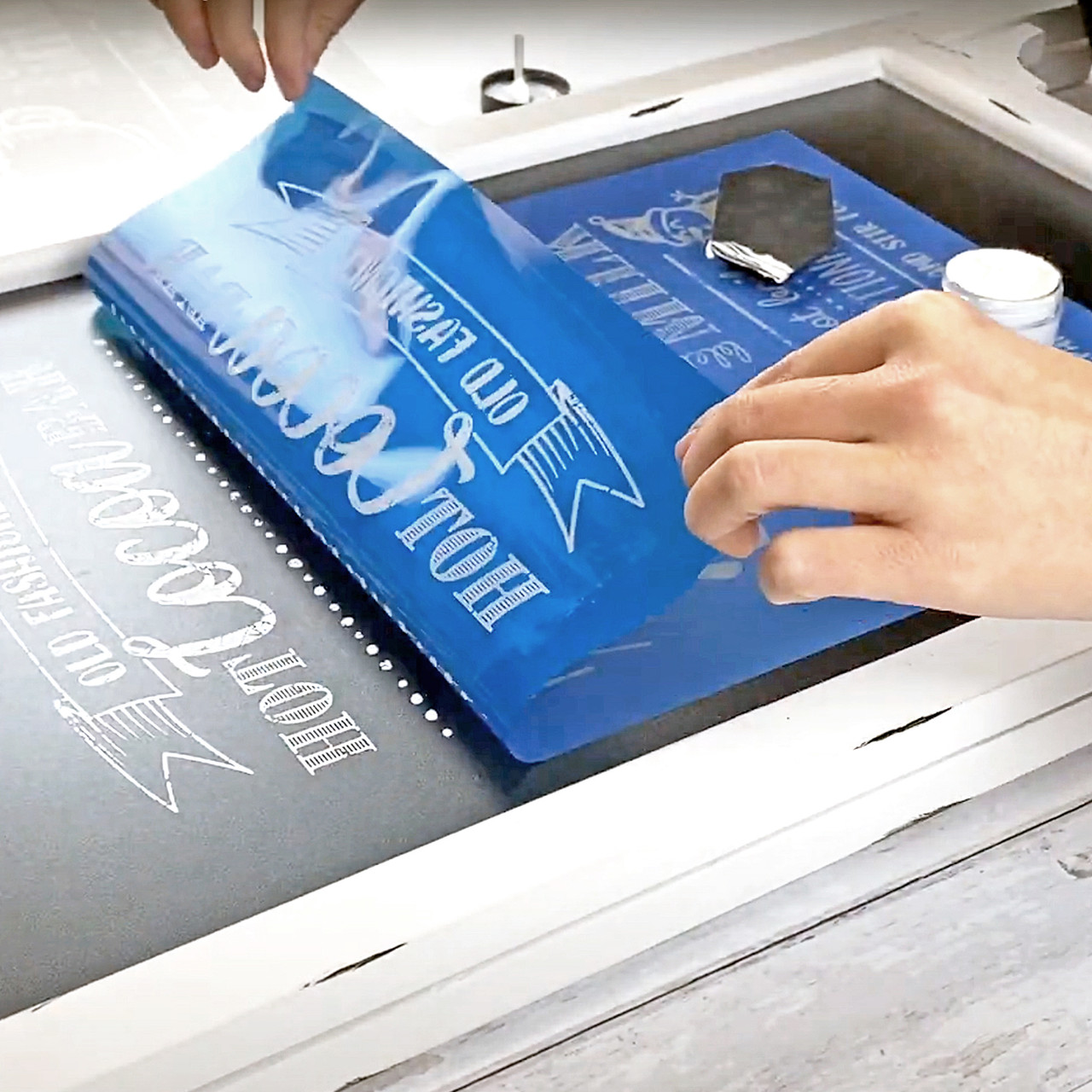Display Printing Uncovered: Everything You Need to Know Regarding Tee Shirt and Garment Printing Strategies
If you've ever before questioned exactly how those lively designs wind up on your preferred tee shirts, you remain in the appropriate area. Screen printing is a remarkable approach that integrates art with method, using countless opportunities for creativity. Understanding the fundamentals, from equipment to ink choices, can considerably influence your outcomes. Prepared to check out the vital aspects that make display printing an art form? Allow's reveal the information that can raise your projects.
The Essentials of Screen Printing: How It Functions
When you dive into display printing, you'll discover it's both a science and an art. At its core, display printing includes producing a pattern, or screen, that permits ink to pass through only in particular locations.
Setting the display over the fabric, then make use of a squeegee to push ink via the screen onto the garment. Each step is crucial, and understanding them will boost your screen printing abilities, changing basic garments right into special, expressive items.
Sorts Of Display Printing Strategies
Once you understand the fundamentals of screen printing, it's time to check out the different methods that can raise your layouts. One preferred method is conventional screen printing, where ink is pressed via a stenciled screen. This technique is terrific for vibrant, dynamic colors. Then there's water-based ink printing, which uses a softer feel and is eco-friendly, but it requires a different technique to healing.
Another option is plastisol printing, recognized for its durability and vivid shades, making it a preferred for many brand names. Experiment with halftone printing to produce gradient results and elaborate layouts.
Necessary Tools for Screen Printing
To accomplish sensational outcomes in display printing, having the ideal devices is basic. You'll need a strong display printing framework, which holds the mesh that moves your style onto the garment. Next off, spend in high-quality squeegees; these are vital for applying ink uniformly across the screen.
Choosing the Right Inks and Products
When picking inks and products for display printing, you need to think about the kind of ink that functions ideal for your task. Consider material compatibility to ensure your styles look wonderful and last long. Likewise, check out green ink choices to make your printing procedure extra lasting.
Sorts Of Screen Inks
Picking the appropriate display ink is essential for attaining lively, sturdy prints that satisfy your project's demands. There are numerous kinds of screen inks to examine. Plastisol ink is preferred for its adaptability and convenience of usage, offering superb color opacity on dark materials. Water-based ink, on the other hand, supplies a softer feel and is eco-friendly, making it optimal for those aiming to reduce their environmental effect. Release inks remove dye from the material, resulting in a soft, classic appearance however require certain handling. Specialty inks, such as glow-in-the-dark or metal, can add unique results to your designs. Assess your task needs and select the ink that lines up best with your preferred result.

Textile Compatibility Factors To Consider
Understanding textile compatibility is important for attaining high-quality screen prints, particularly since various products react uniquely to different inks. Constantly evaluate your inks on example material to guarantee they stick correctly and keep shade integrity. In addition, keep in mind that material weight and appearance can impact the final result, so picking the best ink and product combo is essential for your project's success.
Eco-Friendly Ink Options
Green inks are coming to be a popular selection for display printers that want to decrease their environmental impact while keeping top quality. When picking inks, consider water-based inks, which are less damaging and simpler to cleanse up contrasted to standard solvents.
Furthermore, look for inks made from renewable resources, such as soy or vegetable-based options. By picking the best inks and materials, you'll not just create spectacular designs however additionally add to a more sustainable printing process. Make the switch, and your prints will reflect your commitment to the atmosphere!
Preparing Your Layout for Display Printing

File Layout Needs
To ensure your design looks sharp and lively on textile, you'll require to pay close attention to file format requirements for screen printing. Make certain your design has a transparent history to prevent unwanted white sides on your prints. Maintain shade modes in mind; CMYK is conventional for screen printing, so convert your RGB develops appropriately.
Color Separation Strategies
Shade splitting up is an essential action in preparing your design for screen printing, and understanding it can greatly enhance your print high quality. You'll need to break your style into private shades, as each shade needs a separate screen throughout printing. Begin by determining all the colors in your design and create layers each. You can make use of software program like Adobe Photoshop or Illustrator to separate and different colors effectively. Be certain to home conserve each layer as a separate file, typically in a format like TIFF or PSD. This accuracy not just ensures accurate shade depiction however also simplifies the printing procedure. By taking note of color separation, you'll accomplish lively and expert cause your screen-printed garments.
Resolution and Size
Attaining the most effective outcomes in screen printing starts with guaranteeing your layout has the right resolution and dimension. Ideally, your art work needs to go to least 300 DPI (dots per inch) for sharp, clear prints. If you make use of lower resolution, your last product could look pixelated and amateur.
When it comes to size, consider the measurements of your print area. Style your art work to match the last print dimension, preferably producing it in the real measurements you'll be printing. By doing this, you'll stay clear of any unanticipated scaling problems.
Always inspect your layout in both vector and raster layouts. Vector graphics can be scaled without shedding top quality, making them perfect for screen printing. Preparing appropriately will ensure your style looks remarkable on every garment!
Step-by-Step Screen Printing Process
Display printing is a vibrant procedure that enables you to produce dynamic layouts on various surface areas. To start, you'll need a screen, solution, and your chosen ink. First, prepare your screen by cleaning it extensively. Next off, apply the emulsion equally and let it dry in a dark area. Once dry, subject your display to light with your style put on it, which will harden the solution where the light hits, creating a pattern - screen printing kit.
Pour ink onto the display and utilize a squeegee to press the ink via the stencil onto the fabric. Raise the display meticulously and allow the print dry. You've successfully screen printed your design.
Tips for Successful Screen Printing Projects
While you're diving into your screen printing projects, bear in mind that prep work is key to success. Beginning by collecting all your products-- inks, displays, garments, and mops. A clean work space aids avoid unwanted errors, so tidy up before you start.
Next, confirm your artwork is high-resolution and properly sized for your garment. Examine your screen for appropriate direct exposure and clean it extensively to prevent spots. When blending your inks, comply with the manufacturer's standards to achieve the appropriate uniformity.
Throughout printing, apply even stress with your squeegee for constant outcomes. Do not rush; take your time to validate each print satisfies your criteria. After printing, let your garments completely dry totally prior to handling or packaging them.
Finally, constantly maintain an example of your job for future referral. In this manner, you can examine your progress and boost your strategies over time. Delighted printing!

Regularly Asked Inquiries
How much time Does It Require To Establish a Screen Printing Job?
Setting up a display printing job usually takes about 30 minutes to an see this site hour. You'll prepare the displays, mix inks, and change the press. The time varies based upon complexity and experience, so stay arranged!
Can I Publish on Different Fabric Keys In Using the Same Technique?
Yes, you can publish on various material types utilizing the exact same method, however you'll need to adjust your setups and inks. Some materials soak up ink in a different way, so experimenting assurances the very best outcomes for each and every material.
What Prevail Errors to Stay Clear Of in Screen Printing?
When display printing, stay clear of typical mistakes like making use of the incorrect ink, overlooking proper direct exposure times, or avoiding pre-press checks. Always test your configuration and maintain tidy screens to guarantee quality outcomes each time.
Exactly How Can I Properly Tidy and Maintain My Display Printing Devices?
To properly tidy and maintain your screen printing equipment, you need to routinely clean screens with ideal solvents, check mops for wear, and ensure all devices are kept dust-free and dry. Uniformity boosts and avoids expensive repair work efficiency.
Is Display Printing Environmentally Friendly Contrasted to Other Approaches?
Screen printing can be much more eco-friendly than other methods, particularly if you make use of water-based inks and eco-conscious materials. By picking sustainable products and techniques, you decrease waste and lessen your influence see page on the planet.
Screen Printing Uncovered: Every Little Thing You Required to Know About T-Shirt and Garment Printing Methods
At its core, display printing involves creating a stencil, or screen, that enables ink to pass through just in details locations. Setting the screen over the textile, after that use a squeegee to press ink through the screen onto the garment. One prominent approach is typical screen printing, where ink is pushed through a stenciled screen.When choosing inks and materials for screen printing, you require to take right into account the kind of ink that functions ideal for your project.